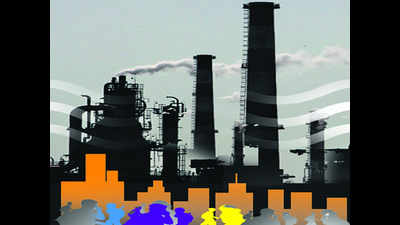- News
- City News
- mysuru News
- Pollution levels in Mandya rise as jaggery units resort to burning plastic
Trending
This story is from May 9, 2019
Pollution levels in Mandya rise as jaggery units resort to burning plastic
The home of Krishnaraja Sagar Reservoir, the lifeline of South Karnataka, sugarcane fields are near ubiquitous in Mandya district.

MANDYA: The home of Krishnaraja Sagar Reservoir, the lifeline of South Karnataka, sugarcane fields are near ubiquitous in Mandya district. Not surprisingly, sugar and jaggery factories have proliferated across Mandya. From the more traditional ‘Aalemane’ to advanced factories, jaggery units dot the district. However, residents in the district are upset with the owners of some jaggery units, whom they blame for defiling the environment.
Use of discarded plastic as an alternative to traditional fuels has resulted in rising air pollution levels, besides diluting the quality of jaggery.Worse still, exposure to the dangerous fumes emitted by burning plastic is a serious health hazard for those employed at the units.
Defending the use of plastic in lieu of other fuels, owner of a jaggery unit in Jigundi cited an array of reasons justifying the move. “We need a lot of fuel to heat the sugarcane juice from which jaggery is extracted. Traditionally, we use the dried wood pulp of sugarcane and other biomass fuels to heat the furnace. However, we are faced with a shortage of the pulp, and rampant deforestation has resulted in the paucity of biomass fuel. Moreover, we need a lot of labourers to heat the vessel. Discarded plastic, which we can procure at throwaway prices, is the best answer to all these problems,” he added.
Endorsing the use of plastic as a fuel as an economically viable option, another jaggery unit owner in Mandya said, “Unlike biomass fuel, it takes us longer to burn plastic. But, we don’t have to get discarded plastic from industrial units that manufacture footwear, and tyres.”
Hazards of burning plastic
Among the dangerous gases emitted by burning plastic are sulphur-di-oxide, nitrogen dioxide, and variety of dioxins (an umbrella term for chlorinated organic chemicals). While nitrogen dioxide, and sulphur-di-oxide can cause severe pulmonary problems, dioxins, which are generally by-products of industrial processes involving burning, can, according to the World Health Organisation (WHO) lead to a variety of health issues – in some severe cases, they can even cause cancer.
Use of discarded plastic as an alternative to traditional fuels has resulted in rising air pollution levels, besides diluting the quality of jaggery.Worse still, exposure to the dangerous fumes emitted by burning plastic is a serious health hazard for those employed at the units.
Defending the use of plastic in lieu of other fuels, owner of a jaggery unit in Jigundi cited an array of reasons justifying the move. “We need a lot of fuel to heat the sugarcane juice from which jaggery is extracted. Traditionally, we use the dried wood pulp of sugarcane and other biomass fuels to heat the furnace. However, we are faced with a shortage of the pulp, and rampant deforestation has resulted in the paucity of biomass fuel. Moreover, we need a lot of labourers to heat the vessel. Discarded plastic, which we can procure at throwaway prices, is the best answer to all these problems,” he added.
Endorsing the use of plastic as a fuel as an economically viable option, another jaggery unit owner in Mandya said, “Unlike biomass fuel, it takes us longer to burn plastic. But, we don’t have to get discarded plastic from industrial units that manufacture footwear, and tyres.”
A senior official of the Karnataka State Pollution Control Board told TOI that they were yet to confirm if jaggery unit owners were using plastic as a fuel. “If we can ascertain that this is the case, we will take steps to put an end to this menace,” he added.
Hazards of burning plastic
Among the dangerous gases emitted by burning plastic are sulphur-di-oxide, nitrogen dioxide, and variety of dioxins (an umbrella term for chlorinated organic chemicals). While nitrogen dioxide, and sulphur-di-oxide can cause severe pulmonary problems, dioxins, which are generally by-products of industrial processes involving burning, can, according to the World Health Organisation (WHO) lead to a variety of health issues – in some severe cases, they can even cause cancer.
End of Article
FOLLOW US ON SOCIAL MEDIA










